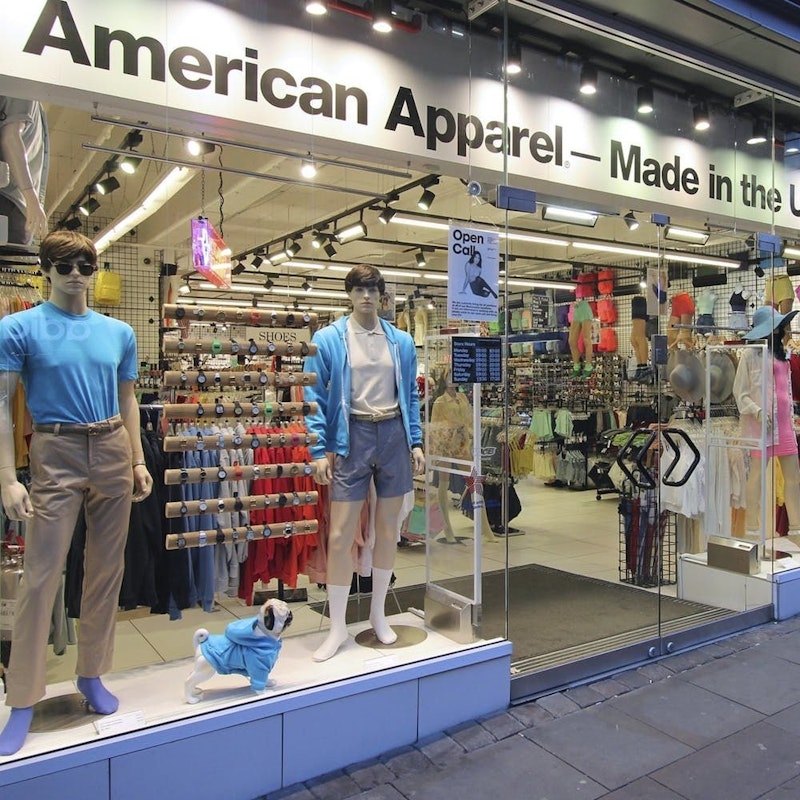We’re frequently outward thinking when it comes to clothing: what other people are wearing and how they perceive what we’re wearing. These outward looks are often based on imitating and differentiating ourselves from others. But I want to emphasize how we perceive our own bodies in clothing, without much regard for others. I’ll begin with an expression with roots in ancient philosophy. A handful of times in Plato’s dialogues, Socrates proclaimed, “Know yourself!” Most interpretations of this phrase emphasize internal qualities, like mental capacities, likes and dislikes, fears, character, and so on. Other than mentioning physical capabilities, like running or jumping, the body isn’t usually (if at all) discussed as part of knowing yourself.
In the Phaedrus, for example, Socrates claims, with seeming regret, that he’s been unable to know himself, as if he’s been too busy. This situation illustrates that knowing yourself and your body is something that has to become an intentional activity. If people don’t make time to know themselves, then they’ll fall passively into habits that they didn’t necessarily want.
What does it mean to know our bodies, especially as it relates to clothing? Just like philosopher Immanuel Kant claimed that there’s no formula you can apply to guarantee the creation of beauty, there’s likewise no formula for assuring the best fashion for your body. Rather than attempting to apply a rule for everyone’s body types—talk of body types is already too limiting—we might find some ideas useful for learning what works for us. Certain colors help to bring out the color of your eyes, and some might wash you out a bit. A quick Internet search reveals numerous websites for determining your skin tone, and which colors will work best on you. We can learn some of these details about how our bodies generally respond to different cuts, sizes, styles, colors, and so on. However, none of this will completely settle the matter about our enclothed body. We need experience and practice to really understand how our body will look and feel—from our perspective—in different clothing.
Some may have skepticism about the importance of the relationships between clothing and one’s body. Especially in a self-identified pragmatic culture like the United States, we may think it matters little whether the marathon winner wore the blue shorts or red shorts. And for what we could call functional clothing, it may not matter as much how aesthetics fits into it. However, it’s clear there are some aesthetic considerations for uniforms, athletic gear, and other functional clothing. Whenever people have choices to make about clothing in any context, there will be a degree of aesthetics involved.
To motivate the importance of reflecting on our enclothed body, an analogy is useful. Architect Suchi Reddy likens clothing to architecture; she says that clothing is a person’s first architecture, and then we build out from there to our homes and towns and beyond. In some ways this seems obvious in the sense that clothing is the most direct shelter for our bodies, protecting us from the sun’s rays, the rain, and the cold. But often overlooked is how clothing makes us feel and why that matters. We frequently settle on items because maybe they’re good enough; or maybe they look good on someone else; or maybe they’re what we think we’re supposed to wear.
Recent studies in architecture and the built environment have confirmed suspicions that we’re impacted by our surroundings. For example, in several studies people are shown to prefer curves to sharper angles because curvature signals a lack of threat. If clothing is our first architecture, then it shouldn’t surprise us that it also has an affective power. I recall getting ready to attend a week-long summer seminar at Princeton University and putting some different clothing options together, I came to the sudden realization, “I hate all my pants!” I’d grown accustomed to buying pants an inch too wide because even sizes were more common than odd sizes at one point in my life, but they were ill-fitting and made me feel uncomfortable. Perhaps, no one else would have noticed, but I saw it in that moment.
Studies on embodied cognition and the affect of the built environment on people have developed at a quicker pace than studies on the affect clothing has on the wearer. Most studies about clothing have homed in on the affect that clothes have on other’s perceptions. How people respond to a business suit or a doctor’s coat, for example. Hajo Adam and Adam Galinsky, in their 2012 article “Enclothed Cognition,” consider the affects that clothing has on the wearer. They realized that both the symbolic meaning and the wearing of the garment (in this case study, a white doctor’s coat) influence the wearer’s psychological processes.
The salient point is that research shows that wearing certain clothing has an affective response on the wearer. While there’s a lot more to be gleaned from such studies, individuals should be conscientious about what affects clothing has on them. At the simplest level, feeling bad or good while wearing something is indicative about whether the clothing works. We might consult some style guides or magazines, but it’s ultimately our own developed opinion that will adorn our bodies. And realizing that some clothing could affect us positively or negatively is motivation enough to begin learning what works best on our bodies.
—Michael Spicher is an educator and researcher in Boston and runs Aesthetics Research Lab, follow him on Twitter: @MRSpicher

